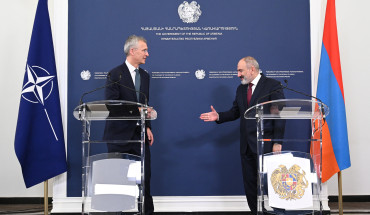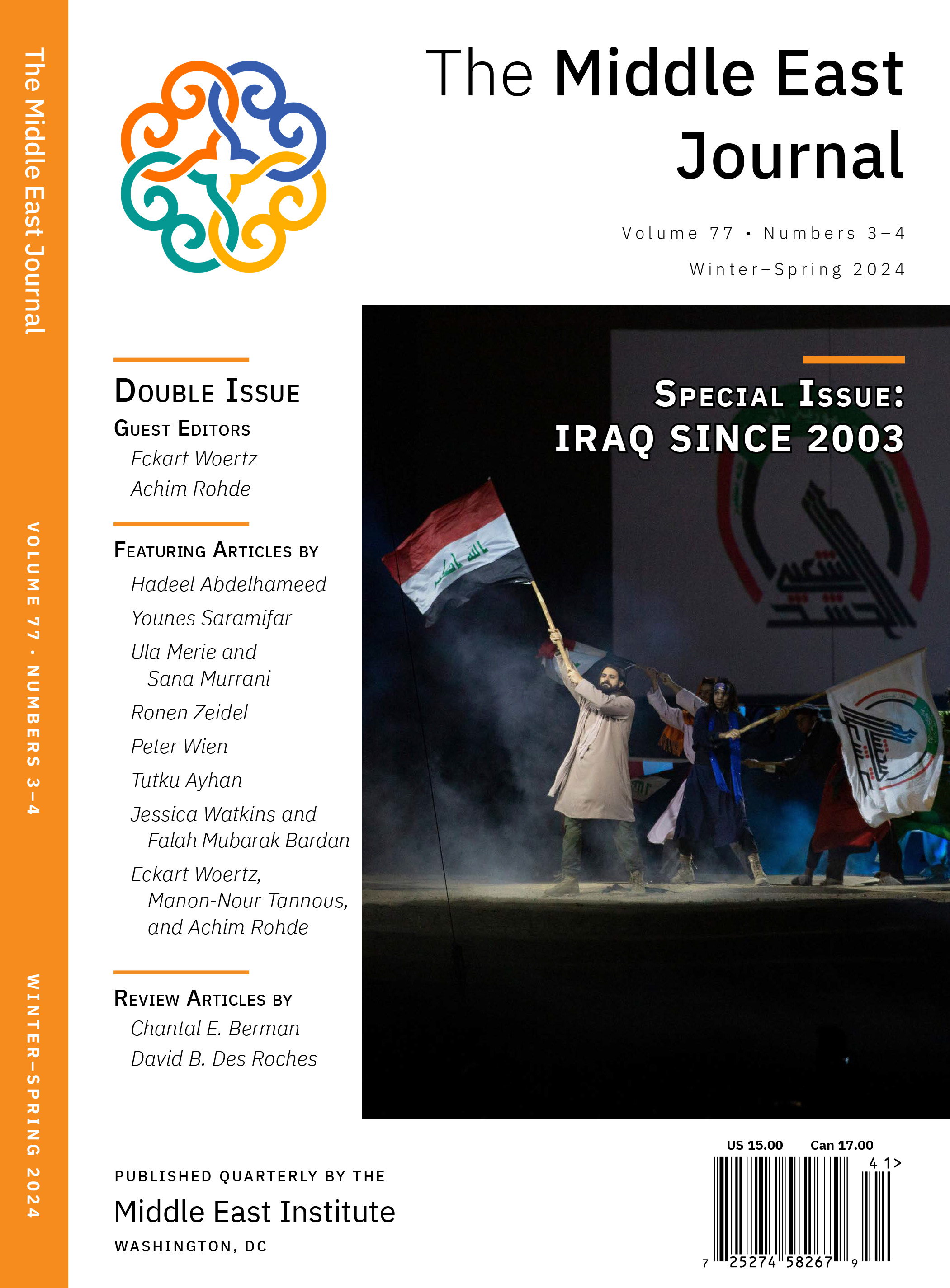Contents:
- Lebanese fear a Gaza scenario as war seems unavoidable
- Escalation weakens Hezbollah and brings more Israelis under fire; a cease-fire in Gaza remains the best way out
- Hezbollah stands to lose much in a war with Israel
- US must connect its diplomacy to a realistic assessment of the balance of forces and interests
Lebanese fear a Gaza scenario as war seems unavoidable
Patricia Karam
Non-Resident Scholar, Lebanon Program

-
The Israel Defense Forces are ramping up attacks over Lebanon clearly designed to wholly destroy Hezbollah; having struck some 1,300 targets to date, the Israeli operation has killed at least 550, wounded over 1,800, and already displaced thousands, sowing widespread panic.
-
As Lebanon continues to bear the devastating brunt of the Israeli campaign, Hezbollah will be increasingly at risk of losing credibility with those who want revenge for the widespread destruction and those angry at the militant group for unnecessarily dragging them into war.
With the lack of headway on the Gaza front, Israel has turned its attention to Lebanon and effectively launched what looks like the third Israel-Lebanon war. On Monday, the Israel Defense Forces (IDF) officially dubbed their campaign “Operation Northern Arrows,” with the declared objective of creating the conditions conducive to the return of displaced citizens to northern Israel. Having broken all previous unofficial rules of engagement that guided Israel’s cross-border conflict with Hezbollah, the Israeli government now seems to have made the decision, with the implicit support of the United States, to wholly destroy the Tehran-backed Lebanese militant group.
Last week, Israel initiated covert operations against Hezbollah members by detonating successive beeper and two-way radio explosions that incapacitated thousands of Hezbollah personnel. It thereafter launched targeted strikes that sought to decapitate Hezbollah’s top command-and-control structure, including the commander of the elite Radwan Force. Israel has since expanded its airstrikes and is in the process of a relentless bombardment to destroy Hezbollah’s infrastructure, targeting storage depots, buildings, and weapons caches. The IDF has struck some 1,300 targets to date, which has killed at least 550, wounded over 1,800, and already displaced thousands, sowing panic and widespread fears that, like Gaza, Lebanon will be reduced to rubble. Meanwhile, Hezbollah has launched rockets and drones deep inside Israel and reiterated its pledge that it will not stop until a truce is reached in Gaza, even though such an outcome looks less likely by the day.
Though Israeli officials still contend that a full-fledged conflict can be avoided if Hezbollah moves away from the border, war now seems unavoidable and is likely to exact a heavy toll on Lebanon. As the air campaign leaves its trail of destruction, the level of casualties inflicted on the Lebanese will only increase in the near term given Israel’s determination to defeat Hezbollah. There is, thus, very little that can be done immediately to stop the rampage because it is fueled by an Israeli conviction that Hezbollah can be finished off. Will Hezbollah withstand these attacks and retain its fighting power? This is yet to be determined, and any course correction by Israel will depend on whether Hezbollah is able to inflict further damage.
The other major consideration for all sides, as Lebanon continues to bear the devastating brunt of Operation Northern Arrows, will be whether Hezbollah begins to significantly lose credibility with those who want revenge for the widespread destruction and those angry at the militant group for unnecessarily dragging them into war. Only time will tell. Until then, what seems clear is that Hezbollah is losing this war. What is less certain is whether Lebanon can recover.
Escalation weakens Hezbollah and brings more Israelis under fire; a cease-fire in Gaza remains the best way out
Nimrod Goren
Senior Fellow for Israeli Affairs

-
After nearly a year of attritional war on its northern front, Israel has decided to change course and take decisive military action against Hezbollah.
-
This escalation follows failed international efforts for a cease-fire in Gaza, which could have helped defuse Israel-Hezbollah tensions; thus, continued mediation with an eye toward these goals remains a vital necessity.
Israel and Hezbollah have been engaged in continuous fighting ever since the group opened fire on Oct. 8, 2023, in solidarity with Hamas. On multiple occasions over the past year, both sides acted in a way that indicated they were not interested in a full-fledged war. Instead, a war of attrition took shape, forcing tens of thousands of Israelis and Lebanese to flee their homes on both sides of the border. High-level international diplomats — especially the United States’ special envoy, Amos Hochstein — repeatedly traveled to the region to, at a minimum, keep the conflict contained. But throughout this period, the mediators argued that only a cease-fire in Gaza could help defuse tensions on the Israel-Hezbollah front.
Once it became clear that a hostage-release and cease-fire deal with Hamas — supported by most Israelis but not by their prime minister — was not on the horizon, Israel changed course. On Sept. 17, the Israeli security cabinet approved an addition to the country’s war objectives: ensuring “the safe return of the residents of the north [of Israel] to their homes.” More intense military actions followed suit, in a sequence of special operations showcasing Israeli preparedness, superior technical proficiency, and battlefield dominance. Israel struck at Hezbollah’s leadership, damaged its communication systems, and degraded its offensive capabilities.
Hezbollah’s response brought many more Israelis under fire, creating a major disruption to daily lives in large parts of the country; but so far at least, there have been far fewer casualties on the Israeli side than was feared. Escalation on both sides is continuing with each passing day. At the same time, Israel has been reportedly sending messages to Hezbollah to try to deter it from firing rockets toward Tel Aviv. The international community has yet to get deeply involved in this escalation, while the US has maintained its focus of preventing the Israel-Hezbollah warfare from spilling over into a region-wide conflict.
This round of intense warfare in Israel and Lebanon is likely to continue for a while. It is currently seen by many in Israel as necessary to restore calm and security. Israelis take pride in their resilience and believe in the Israel Defense Forces’ capacity to achieve their goals. But this attitude is coupled with lack of trust in Benjamin Netanyahu’s government, doubts about the motives for his decisions, and lack of clarity about the way out of a terrible year of war on multiple fronts.
The escalation with Hezbollah somewhat draws Israeli public attention away from Gaza, but Oct. 7 is around the corner. Memories and losses from a year ago will dominate the Israeli public debate. The fate of the hostages remains a major concern, exacerbated by statements from US officials reflecting low expectations that a deal will be reached before the end of Joe Biden’s presidency.
World leaders are convening this week in New York for the United Nations General Assembly. It is an annual festival of diplomacy. Alas, this year, it will be held under a cloud of failure. Nearly a year of international mediation efforts did not manage to stop the Gaza war, bring Israelis hostages back home, or prevent the latest Israel-Hezbollah escalation.
Reaching a cease-fire and hostage-release deal between Israel and Hamas still seems to be the best way out of the spiraling conflict in the Levant. The US administration should not give up on that objective and needs to do its best to make it happen.
Follow: @GorenNimrod
Hezbollah stands to lose much in a war with Israel
Charles Lister
Senior Fellow, Director of Syria and Countering Terrorism & Extremism programs

-
The pager and walkie-talkie attacks on Sept. 17-18 may have neutralized as much as 15% of Hezbollah’s full-time fighting force and crippled the group’s command-and-control infrastructure, while the death of Ibrahim Akil decapitated its elite Radwan Force, which would have spearheaded any attempt to advance territorially into Israel.
-
If Hezbollah does not try to fight back in a meaningful way, its reputation across the region will suffer a huge, potentially irreversible blow; but if it does choose to counter-escalate, the destruction and death witnessed in recent days will have only been the precursor for much more, and worse to come.
In less than a week, Hezbollah has suffered a series of crippling blows at the hands of Israel’s military and intelligence services. By all accounts, the pager and walkie-talkie attacks on Sept. 17-18 may have neutralized as much as 15% of its full-time fighting force, as reservists were not allocated the targeted devices. More consequentially, the group’s command-and-control infrastructure was crippled at the click of two buttons.
Meanwhile, the death of Ibrahim Akil on Sept. 20 sealed the decapitation of the group’s elite Radwan Force, which would have spearheaded any attempt to advance territorially into Israel. The heavy Israeli bombing seen on Sept. 23 reportedly struck 1,300 Hezbollah targets, focusing on its rocket launchers and storage sites for its most strategic assets, ballistic and cruise missile systems.
The severe escalation seen on Monday represented the heaviest day of Israeli airstrikes in Lebanon since 2006 and the deadliest day of violence the Lebanese people have seen since the conclusion of the civil war nearly 35 years ago. By the end of the day, Israel’s “Operation Northern Arrows” had left over 550 people dead and more than 1,800 injured. By deaths alone, that equated to more than a third of the entire casualty count from the 34-day war in 2006 — in a single 24-hour period. Amidst Israel’s virtually unprecedented barrage, Hezbollah launched roughly 200 rockets into central and northern Israel in response.
Hezbollah's response so far seems to pale in comparison to the worse-case scenarios associated with its estimated 150,000-strong arsenal of rockets and missiles. Whether that is due to the paralysis in the group’s communication infrastructure; to Israel’s systematic targeting of rockets, missiles, and their launchers; to Hezbollah’s hesitance to escalate from a position of clear disadvantage; or a combination of all three remains to be seen. If Hezbollah is to respond in a serious way, time is of the essence, as Israel’s preemptive action is methodically and aggressively removing any room for significant pushback by the hour.
If Hezbollah does not attempt to fight back in a meaningful way, its reputation across the region will suffer a huge, potentially irreversible blow. While it claimed internally to have been the victor in 2006, there would be no room for such spin this time around. On the other hand, if it does choose to counter-escalate, the destruction and death witnessed in recent days will have only been the precursor for much more, and worse to come.
Follow: @Charles_Lister
US must connect its diplomacy to a realistic assessment of the balance of forces and interests
Brian Katulis
Senior Fellow for US Foreign Policy

-
That the escalation of violence between Israel and Hezbollah occurred just as US Secretary of State Antony Blinken was on his 10th trip to the region since the war started underscores the marginal impact the administration’s diplomacy has had in quelling tensions.
-
The US is trapped in a reactive, crisis-management mode because it remains unwilling to use the force and leverage needed to produce the diplomatic outcomes it says it wants to achieve.
The escalation of violence between Israel and Hezbollah in Lebanon undercuts efforts by the Biden administration to use diplomacy to de-escalate tensions and end conflicts across the region, including the months-long push for a cease-fire and hostage-release deal in Gaza.
The fact that this escalation occurred just as US Secretary of State Antony Blinken was on his 10th trip to the region since the Israel-Hamas war started underscores the marginal impact the Biden administration’s diplomacy has had in quelling tensions.
The Middle East has been teetering on the edge of a wider escalation for much of this past year, with the risk of regional states going directly to war with one another growing. In April, the Middle East saw a fairly controlled exchange of fire between Israel and Iran. That incident was a watershed moment. But the two countries have pulled back from the brink of a wider war since then and have instead engaged in a tit-for-tat exchange of attacks, mostly through Iran’s partners like Hezbollah in Lebanon and the Houthis in Yemen. The centerpiece of the struggle has been asymmetric warfare between Iran and its proxies on the one hand and Israel, the United States, and some of the Arab countries, mostly as silent partners, on the other.
In many ways, what we’re seeing is a continuation of a decades-long shadow war that has pitted Iran versus Israel and the United States, but these days it is more out in the open than ever before, in part because of the Israel-Hamas war in Gaza and the incentives that Iran’s so-called Axis of Resistance has in pushing the limits and engaging in a war of attrition against Israel. But it’s important to keep in mind the two core drivers of these events: a regime in Iran that operates with a revolutionary ideology that seeks to upend the state order of the Middle East, and an increasingly right-wing Israeli government that rejects a two-state solution and is unable to see the historic opportunity it has to open relations with key Arab states if it took steps to define a clear end to this war that leads to a State of Palestine.
In this context, the United States and other outside actors like Europe, China, and Russia can play important roles in trying to shape the trajectory of events in the region, but the main drivers are the regional actors themselves. The Arab Gulf states, particularly Saudi Arabia, are an interesting pivotal grouping here, as they do not want to see a wider regional escalation with Iran but do want to advance a two-state solution.
The Biden team is definitely frustrated, but in many ways it’s a frustration born largely out of its own wishful thinking and unwillingness to face some harsh realities in today’s Middle East.
Both Israel and the Iranian axis have been calling plays on each other for months and flirting with a wider regional war — and America currently lacks the will and strategic focus to fundamentally shift those dynamics.
The US is trapped in a reactive, crisis-management mode because it remains unwilling to use the force and leverage needed to produce the diplomatic outcomes it says it wants to achieve. Darker days are ahead.
Follow: @Katulis
Photo by RABIH DAHER/AFP via Getty Images
The Middle East Institute (MEI) is an independent, non-partisan, non-for-profit, educational organization. It does not engage in advocacy and its scholars’ opinions are their own. MEI welcomes financial donations, but retains sole editorial control over its work and its publications reflect only the authors’ views. For a listing of MEI donors, please click here.













